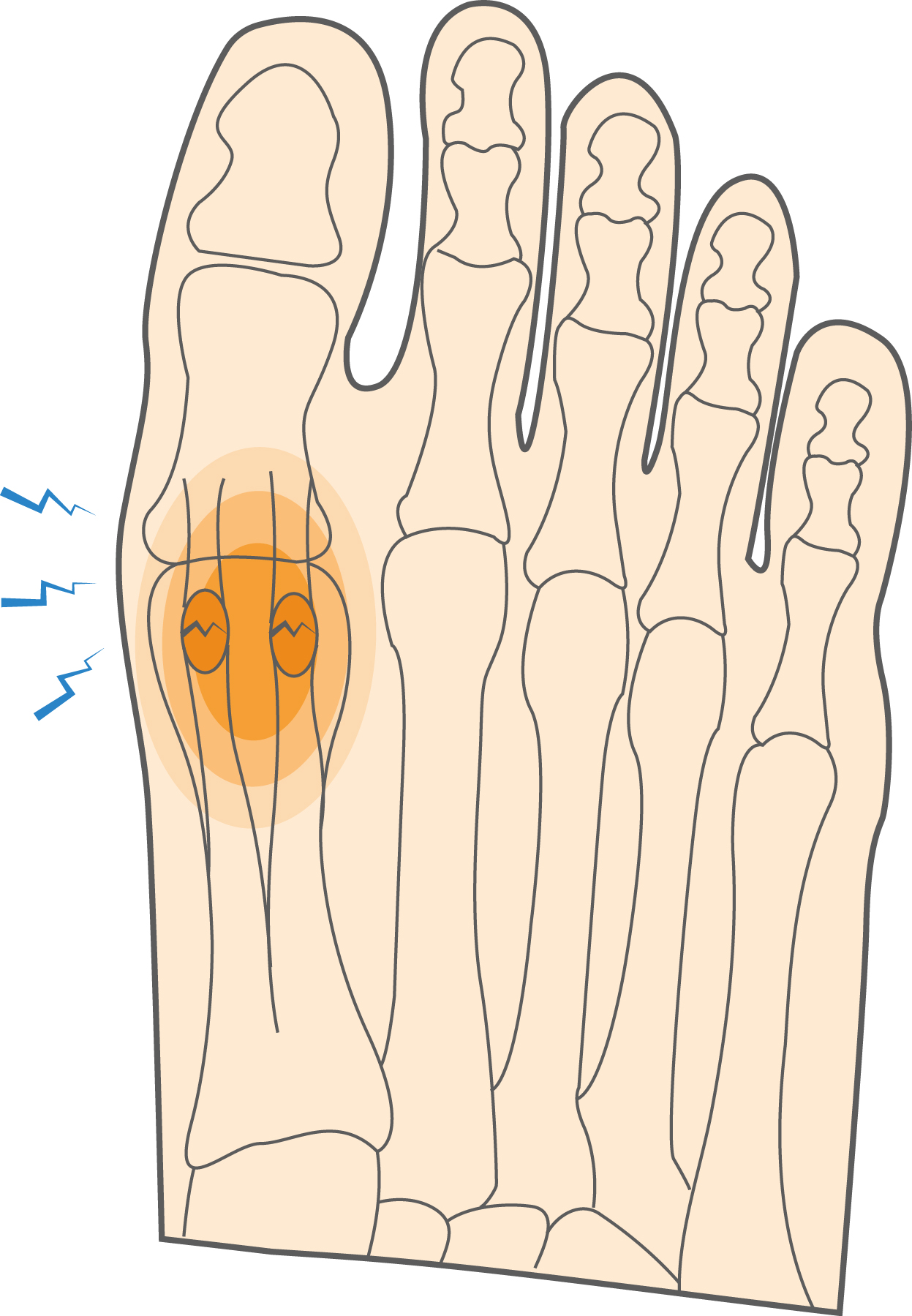The sesamoid complex sits under the great toe. These are two small bones that facilitate the movement of the great toe, absorb weight placed on the ball of the foot, and come under a lot of force when running and jumping.
Unlike most other bones, sesamoids are not connected to other parts of the skeleton, but rather are embedded into muscle. The larger tibial sesamoid lies within the medial head of the flexor hallucis brevis muscle; the smaller fibular sesamoid lies within the lateral head.
Fractures are more common in the tibial, rather than in the fibular sesamoid, but both kinds of fractures can cause pain and discomfort and may require surgical intervention in serious cases.


